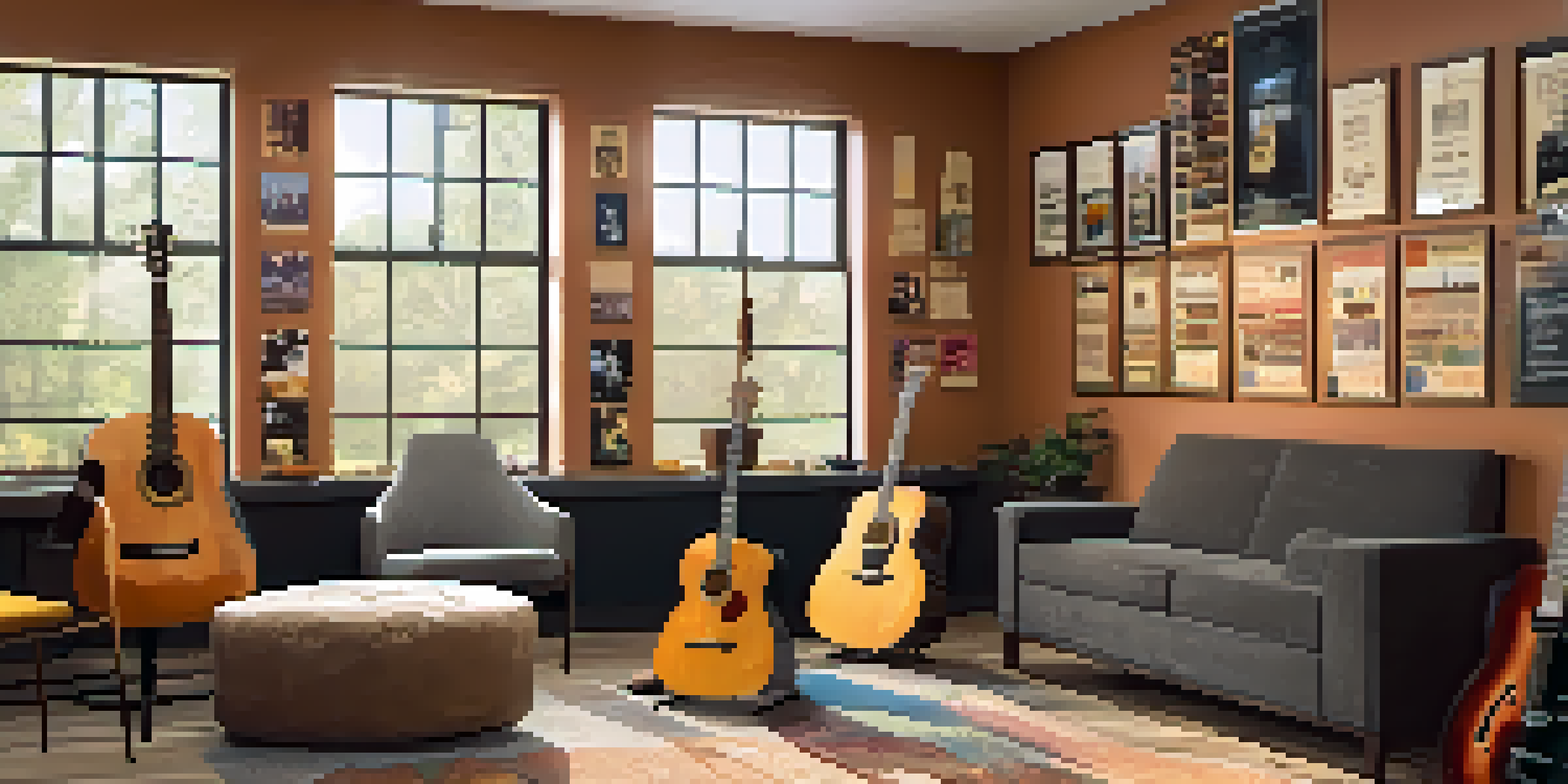Choosing the Right Location for Your Guitar Teaching Studio

Understanding Your Target Audience's Needs
Before you choose a location for your guitar teaching studio, it's crucial to understand who your target audience is. Are you catering to children, adults, or a mix of both? Knowing this can help you identify areas where your potential students live or work, making it easier for them to attend lessons.
Success usually comes to those who are too busy to be looking for it.
For example, if your focus is on young children, consider a location near schools or family-friendly neighborhoods. On the other hand, if your students are primarily adults, a spot near workplaces or in vibrant community hubs may be more appealing. Understanding their needs will guide you to the right spot.
Additionally, think about the accessibility of your chosen location. Is it easy to find? Is there ample parking or public transportation nearby? These factors can significantly influence the willingness of students to attend your studio, so keep them front of mind when scouting locations.
Analyzing the Competition in Your Area
Once you have a grasp on your target audience, it's time to assess the competition. Look at other guitar teaching studios in your area and analyze their strengths and weaknesses. This insight can help you identify gaps in the market that you can fill.

For instance, if most local studios focus on classical guitar, you might want to specialize in contemporary styles like rock or pop. Alternatively, if you notice a lack of beginner-friendly programs, you could create tailored offerings for new students. Understanding your competition will give you an edge in establishing your studio.
Know Your Audience's Needs
Understanding who your students are helps in choosing a convenient location for your guitar teaching studio.
Remember to also consider the environment around your potential location. If your competitors are situated in a bustling area, you might need to find a way to stand out. Whether it's through unique lesson offerings or a more personalized approach, knowing what others are doing can help you carve out your niche.
Evaluating Accessibility and Transportation Options
Accessibility is a vital factor when choosing a location for your guitar teaching studio. You want to ensure that your students can easily reach you without facing significant transportation hurdles. Consider locations that are near major roads, public transit, or have ample parking to encourage attendance.
The best way to predict the future is to create it.
Imagine a busy parent trying to juggle work and kids' activities. If your studio is conveniently located, they are more likely to commit to regular lessons. On the other hand, if your studio is tucked away in a hard-to-reach area, potential students may think twice before signing up.
Additionally, think about safety and comfort for your students. A well-lit, friendly neighborhood will make students feel more at ease when they arrive for lessons—creating a positive first impression that can lead to long-term relationships.
Considering the Size and Layout of the Space
When selecting a location, the size and layout of your teaching space are critical. You'll need enough room not only for your teaching area but also for any equipment and materials you might use. A comfortable, inviting environment can enhance the learning experience for your students.
For example, if you're teaching group lessons, ensure there’s ample space for multiple students. On the other hand, if you plan to focus on one-on-one lessons, creating an intimate atmosphere might be more beneficial. Think about how you'll arrange the room to facilitate both teaching and student comfort.
Assess Competition Wisely
Analyzing local competitors allows you to identify gaps in the market and tailor your offerings accordingly.
Moreover, consider soundproofing options. As a guitar teacher, you'll want to minimize noise disruption, both for your students and neighboring businesses or residents. A layout that accommodates sound control can make a significant difference in creating a conducive learning environment.
Budgeting for Rent and Operational Costs
Choosing the right location goes hand-in-hand with your budget. It's essential to evaluate the rent and any additional operational costs associated with your chosen space. Remember that a prime location may come with a higher price tag, so weigh your options carefully.
Consider what you can realistically afford while still allowing room for other expenses, such as utilities, insurance, and maintenance. A great location can attract students, but if you're stretching your budget too thin, it could lead to stress in the long run.
Additionally, think about potential revenue streams. If you can offer group lessons, workshops, or even sell music-related merchandise, these could help offset the costs of a more expensive location. A well-planned budget will set the foundation for your studio's success.
Assessing the Community and Local Resources
The community surrounding your guitar teaching studio plays a significant role in your success. A vibrant, arts-friendly community can provide support and opportunities for collaboration. Look for areas that host music events, festivals, or local gatherings to increase your visibility and reach.
Engaging with local resources, such as music shops, schools, and community centers, can also be beneficial. These connections can lead to partnerships, student referrals, and even shared marketing efforts. Building relationships within the community will enhance your studio's reputation and attract more students.
Create a Welcoming Atmosphere
A comfortable and inspiring environment enhances the learning experience, making students feel motivated to return.
Lastly, consider the demographics of the area. Understanding the local population's interests and needs can help tailor your offerings. For instance, if you find that many residents are interested in rock music, you might want to focus on that genre in your lessons.
Creating a Welcoming and Inspiring Atmosphere
The atmosphere of your guitar teaching studio can significantly influence the learning experience. A welcoming and inspiring environment encourages students to feel comfortable and motivated. Consider using warm colors, comfortable seating, and inspiring decor to create an inviting space.
Incorporate elements that reflect your personality and teaching style. Whether it's showcasing student achievements or displaying your favorite instruments, these personal touches can help foster a sense of community and belonging.

Additionally, think about how you can make the space conducive to learning. Well-organized materials, proper lighting, and a clean, clutter-free area can all contribute to a positive experience for your students. Ultimately, a thoughtfully designed atmosphere will keep them coming back for more.